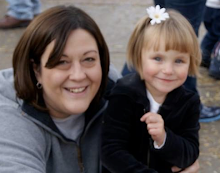Diaper rash is a very common condition that can cause a baby's skin to become sore, red, and tender. The rash usually occurs because the skin is irritated by soiled diapers; friction from the diaper; or certain brands of detergent, soaps, or baby wipes on sensitive skin. The plastic that prevents diapers from leaking also prevents air circulation, thus creating a warm, moist environment where rashes and fungi can thrive.
Also, the introduction of new foods can change the content and frequency of a baby's feces (poop), which can sometimes lead to a diaper rash. And diarrhea can make a diaper rash worse.
Diaper rash that lasts for more than a few days, even with changes to the diapering routine, might be caused by a yeast called Candida albicans (a type of fungus). This form of the rash is usually red, slightly raised, and has small red dots extending beyond the main part of the rash. It often starts in the creases of skin and can spread to skin on the front and back of the baby. Antibiotics given to a baby or a breastfeeding mom can lead to a yeast infection by killing off the "good" bacteria that keep the Candida from growing.

Preventing Diaper Rash
The best way to prevent diaper rash is by keeping your baby's skin as dry and clean as possible and changing diapers often so that feces and urine won't irritate the skin.
To prevent diaper rash:
- change your baby's soiled or wet diapers as soon as possible and clean the area thoroughly
- occasionally soak your baby's bottom between diaper changes with warm water by running tap water over it or by squirting with a water bottle
- allow your baby's skin to dry completely before you put on another diaper
- pat the skin gently with a soft cloth when drying it — rubbing can lead to irritation
- put the diaper on loosely to prevent chafing
If you use cloth diapers, rinse them several times after washing to remove any traces of soap or detergent that can irritate your baby's skin. Avoid using fabric softeners and dryer sheets — even these can irritate the skin.
Some experts suggest allowing your baby to go without diapers for several hours each day to give irritated skin a chance to dry and "breathe." This is easiest if you place your baby in a crib with waterproof sheets or on a large towel on the floor.
Some babies with sensitive skin can benefit from the application of a preventative barrier cream or ointment with each diaper change, but not all babies need this. Some babies are sensitive to baby wipes and can alternatively be cleansed with a cotton round moistened with water.
Treating Diaper Rash
Diaper rash usually can be cleared up by checking your baby's diaper often and changing it as soon as it's wet or soiled. Creams and ointments that contain zinc oxide or petroleum help to soothe skin and protect it from moisture, and should be smeared on thickly (like icing) at each diaper change. Diaper rash usually goes away within 2 to 3 days with home care, although it can last longer.
When to Talk to the Doctor
If the rash persists, increases or if sores appear on your baby's skin, talk to your doctor. You should also seek medical care if the rash is associated with fever, there is pus draining from the rash or your child is irritable.
Depending on what type of rash your baby has, the doctor may choose to use an antifungal cream, an antibiotic cream, or a mild steroid cream for a few days until the rash disappears.
Reviewed by: Yamini Durani, MD









No comments:
Post a Comment